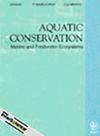Baseline Assessment for Monitoring Rhodolith Beds Close to the Harbour of Porto Central at the Espirito Santo State, Southeastern Brazil.
Abstract
The rhodolith beds along the Brazilian continental shelf play a vital role in biota conservation and cover a significant area of the inner shelf margin. Because of their mobility and susceptibility to disturbances, it is crucial to map and monitor these habitats to distinguish changes caused by natural and human-induced factors. Few studies have described rhodolith mobility, and there is a lack of monitoring data to accurately assess variations over time. This study performed a preliminary evaluation of changes in the structure and health of rhodolith beds exposed to environmental disturbances. This evaluation is required for the environmental licensing of the Porto Central in Espirito Santo State, Brazil, before the beginning of dredging operations. This study focuses on the morphology of the rhodoliths and evaluates their percentage cover, sediment burial levels, vitality and mobility and/or burial across two sampling sites in shallow and deep waters. The shallow site showed higher rhodolith cover and greater stability despite containing smaller rhodoliths with more spherical shapes. Seasonal variations in rhodolith cover showed inconsistent patterns across sampling sites. Dynamic variation in rhodolith burial by sediments was observed, but there were no significant differences between the two sites across seasons. Most rhodoliths at the deeper sampling site exhibited healthy pigmentation; only a small percentage showed high or extreme bleaching stress. The lack of seasonal patterns suggests storm influence all year round. The monitoring programme will act as a warning method to detect potential side effects of dredging activities; furthermore, it contributes to a monitoring database that may aid other monitoring studies helping the rhodolith beds conservation.

 求助内容:
求助内容: 应助结果提醒方式:
应助结果提醒方式:


